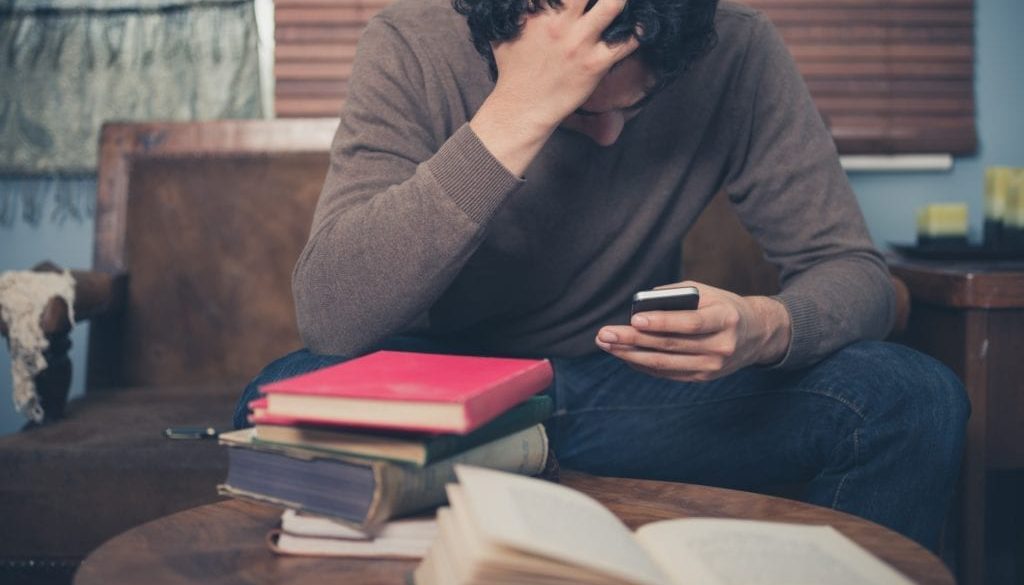School Tips Lines Have Uncovered a Teen Mental Health Crisis
The shocking and tragic mass shootings across the United States has brought school safety to the forefront of educators’ minds. After the heartbreaking events in Parkland, Florida and Santa Fe, Texas, both school districts and state law makers have poured billions of dollars into efforts to prevent another mass shooting, according to NBC News. Much funding has been put into important school safety initiatives such as fortifying school campuses, hiring more school resource officers, investing in bulletproof glass, and installing technologies such as mobile panic button applications and anonymous tip lines. Although these are all extremely important when it comes to school safety, anonymous school tip lines have uncovered another crisis that clearly must be addressed: teen suicide and mental health.
A Growing Teen Mental Health Crisis
Teens are experiencing more mental health illnesses, such as depression and anxiety, today than in the past. According to the CDC, from 2007 to 2017 the percentage of teens who said they have experienced major depression more than doubled from 7% to 13%.
A 2019 study conducted by the Department of Justice found that a majority of those who carried out a school mass shooting had dealt with mental health issues including depression, suicidal thoughts, and post-traumatic stress disorder. Although suicidal people are not typically homicidal, research has found that a majority of the teens who have attacked schools had previously threatened or tried to commit suicide, and half expected to die in their attacks, according to NBC News.
When a student feels depressed or suicidal, they may be too ashamed to admit that they need help, or they’re afraid to expose any problems at home, explains Matthew Wintersteen, director of research in the Division of Child and Adolescent Psychiatry at Thomas Jefferson University. Helping teens who are starting to feel depressed long before hurting themselves or others is a huge challenge schools are now facing.
By implementing anonymous school tip lines, schools originally believed they would uncover school safety threats, but really found many of the tips flooding in were actually concerns for fellow suicidal and depressed students.
Anonymous School Tip Lines Are Key
On a Sunday evening in November 2017 a sleepy father opened his door and was shocked to see two police officers. They quickly told him they had received a report that his teenage son was about to kill himself and rushed inside.
“The dad had no idea about any of this,” said Hermiston Police Chief Jason Edmiston, one of several law enforcement and school officials who described the incident to NBC News. “He was out in the living room and had no idea what was going on.”
The officers burst into the teen’s bedroom and found him sitting in a chair with a belt wrapped tightly around his neck. He was not breathing. According to NBC News, one of the officers pulled the teen out of the chair, removed the belt, and performed CPR. Luckily, the teen survived and was brought to the hospital, and then to an outpatient mental health treatment.
“They basically saved his life because of this tip from a student,” said Tricia Mooney, superintendent of the Hermiston School District.
A classmate sent in an anonymous tip to the state’s school safety tip line letting officials know that this teenager was suicidal and had shared an image of himself with a belt around his neck. Without submitting this tip, the boy may not be alive today.
The Proof is in the Data
Several school districts and states have implemented school tip lines to help in preventing school safety threats, but instead have found a high number of students who are unfortunately suicidal. According to annual reports compiled by state agencies, reports of students self-harming or feeling suicidal have far outpaced the number of threats against schools.
Oregon’s state school tip line has received 540 reports of suicidal students when compared to the 278 reports of a threatened attack on a school. In Pennsylvania they received a huge 2,529 reports of self-harm and 2,184 reports related to suicide in the first 6 months last year. They received 607 reports of threats against schools in comparison. Wyoming saw 239 suicide threats, the most common reported, compared to 45 reports of planned school attacks. These numbers prove that although there are school attack threats coming through these school tip lines, there are far more reports of self-harm and suicide threats that must be addressed.
Schools are unfortunately more likely to experience a loss of a student to suicide than see the loss of a student in a mass shooting on campus. The Centers of Disease Control and Prevention provide the number of children who took their own lives has nearly doubled from 2007 to 2017, amounting to 3,008 suicides among kids aged 10 to 19. NBC News explains that both psychologists and counselors claim these figures, and data from school tip lines, should be a wake-up call to a far more likely threat.
“School violence is not our only concern,” said David Lillenstein, president of the Association of School Psychologists of Pennsylvania. “We also have a bigger concern and that’s with mental health and mental well-being.”





